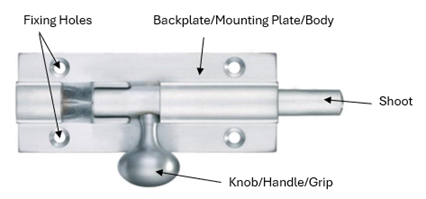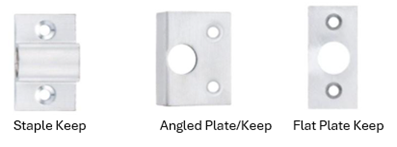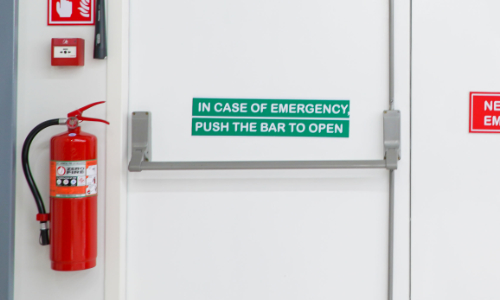Door bolts come in all shapes and sizes. While our blog "30 Types of Door Bolt" dives deep into the different styles available, here we’ve compiled some quick, straightforward answers to common questions about door bolts.
Q: Do I need to use bolts on tall doors?
A: The word "need" is strong, but we definitely recommend using door bolts on the top and bottom of tall doors—unless they already have a multipoint espagnolette lock or a cremone bolt installed.
Why? Bolts add extra security by providing additional locking points. They also help prevent warping or bowing by holding the door leaves more firmly in place. On single or French doors, cranked or straight bolts can improve sealing against drafts, weather, or for privacy. For tall double doors, bolts can secure the second leaf while allowing the main one to open freely.
Q: What are the parts of a door bolt called?
A: Although there are many types of door bolts, most share three basic components:
- The shoot – the part that moves when you operate the bolt.
- The body or backplate – the fixed section that’s mounted on the door frame.
- The handle – the part you turn or push to engage the bolt.


Q: How many hinge bolts per door?
A: Security hinge bolts are usually sold as a pair. One pair should be fitted per door leaf. So, if you have a pair of outward-opening doors, you’ll need two pairs of hinge bolts in total.
Q: Can you bolt a fire door?
A: Yes, you can install a bolt on a fire door—but it depends on the type of bolt and the fire rating of the door.
For final exit or fire exit doors, a panic bolt or panic hardware is suitable. These are designed for emergency egress and can be operated via panic bars or push pads. For doors marked “Fire Door Keep Locked,†you can use fire-rated bolts like flush bolts, provided they’re installed correctly with an intumescent kit. The primary leaf should remain non-locking and always closed.
Single fire doors that are kept locked can use CE/UKCA-marked deadbolts, such as deadlock, sashlock, lever locks, or specialized fire brigade locks. Always ensure that the correct intumescent ironmongery is used for full compliance.

Q: Can you fit a security bolt on a fire door?
A: If you're referring to a mortice door bolt, the answer is no. Mortice bolts aren’t CE/UKCA marked or tested for use on fire-rated doors. However, other types of bolts—like fire-rated deadbolts—can be used on doors that are designated as “Fire Door Keep Locked.â€
Q: Can you use a drop bolt on a fire door?
A: Drop bolts, such as garage-style ones, are not suitable for fire-rated doors. They lack CE/UKCA certification and haven’t been tested for fire safety.
If you need to hold a fire door open, consider using compliant solutions like Dorgard, Dorgard SmartSound, or UNION DoorSense. These devices allow the door to close automatically during a fire. For locking or securing a fire door, options like door closers or access control systems are better choices.
Need help choosing the right solution for your space? Contact our team today for expert advice.
Q: Can you put a bolt on a UPVC door?
A: Yes, there are several specialist bolts designed specifically for UPVC doors. These include concealed shoot bolts and surface-mounted options that provide both security and aesthetic appeal without damaging the door material.
Cutting Rule,Rules For Cutting,Cardboard Cutting Rule,Die Cut Rule
Jiangyin Mitoo Precise Co.,Ltd. , https://www.mitoosteel.com